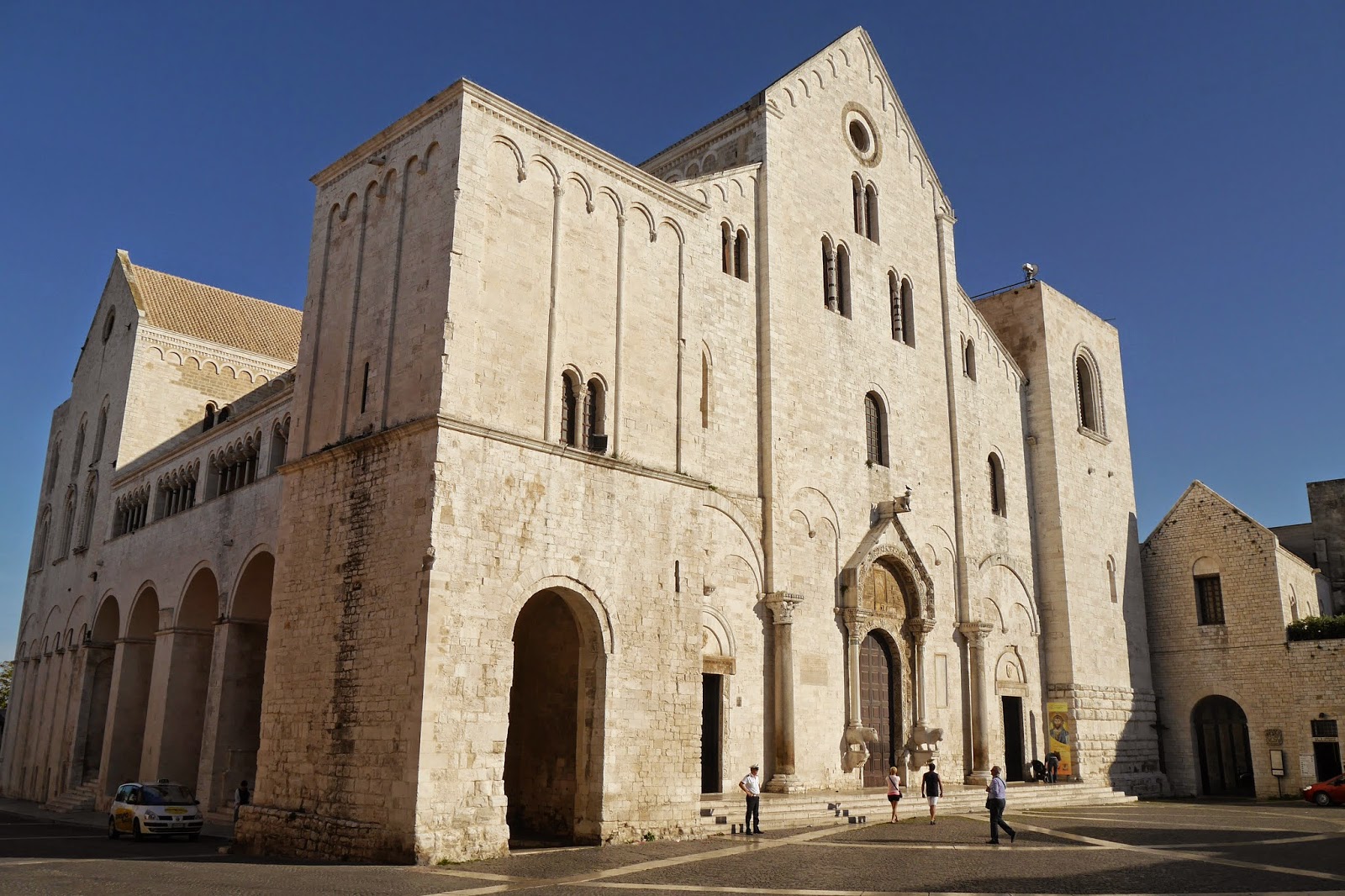The Cathedral
We've just arrived in Monopoli, on the north coast of Puglia, which will be our base for the next few days as we explore the famous Trulli houses of Alberobello and the celebrated White Towns. We thought we should start with an exploratory walk around the town.
We are staying in a Bed & Breakfast just outside the Old Town, so we walk down the hill towards the sea and soon find our way to the Baroque 16th century cathedral. It is fronted by a small square, closed off on one side by a large stone wall. It is strange but very effective.
We walk down the street beside the Cathedral, delighted to discover that we have stumbled on the tourist historical trail around the Old Town. At the end of this street we suddenly emerge beside the old town walls and the sea. People have clearly moved off the small beach onto the rocks as the sun has left the beach, which is to the right.
Further along the street which runs behind the walls we come upon the tiny chapel of St Vito. It looks as though it had melted.
A little further on we reach the sea again and another battered church of San Salvatore. We were struck by the shape of the windows.
Next we find the ruins of the Torre Santa Maria, from which there is a nice view of the 16th century castle.
This looks even better, basking in the evening sunshine, from directly in front.
We follow the edge of the harbour round to Piazza Garibaldi, a delightfully intimate square whose best feature is the Torre Comunale.
We have a delightful aperitif of Fiano in one of the many bars and then walk along via Garibaldi, past another nice Baroque church, San Domenico.
At the end we briefly visit the tourist office to find out where we can locate a bank. We are very helpfully told that such a thing does not exist in the old town and pointed towards a square in the new where we can find one.
Conditions: warm, sunny, blue sky.
Distance: two miles.
Rating: three and a half stars. A charming, quiet town.


























































